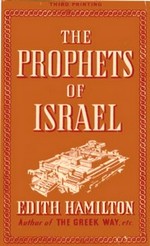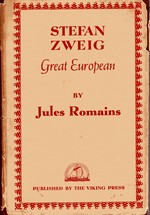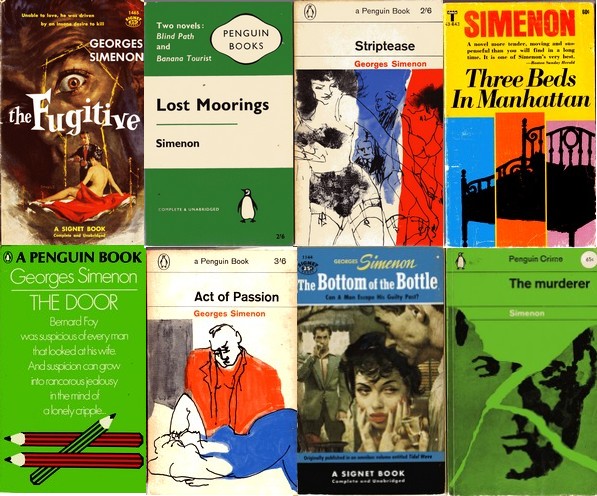
· Excerpt
· Editor’s Comments
· Other Comments
· Locate a Copy
Excerpt
In the eighth century before Christ, all over the civilized world form had taken the place of substance in men’s creeds. The splendors of worship grew more splendid, the multitudes of priests and devotees perpetually greater; ceremony followed upon ceremony; but the spirit that had informed the temples and the shrines was gone. The old terror was dying and all but dead. Behind the magnificence was emptiness. And then something happened, one of the most important events that ever happened, which was to result in nothing less than a completely new idea of religion, an altogether different relation of men to God. In a little country of no consequence whatever to the ruling powers, to the two-thousand-year-old mother of civilization, Egypt, to the fearful, irresistible war-machine, Nineveh, to the caravans and fleets of Babylon the great, a man arose, one man, all alone, to set himself against the force of the whole world’s conviction; and after him another and then another, each always by himself against the nations, in all a mere handful of men, who had a vision of a new heaven and a new earth, a new motive-power for mankind and a new road to God, and who proclaimed this strange conception with a passion and a power never surpassed in the three thousand years that stretch out between their day and ours.
Editor’s Comments
Edith Hamilton’s books on classical Greece and Rome and their mythologies–particularly The Greek Way–have remained in print and are still used as basic texts in hundreds of high school and college courses each year. Far less well known are the three books she wrote about Biblical history–The Prophets of Israel, Spokesmen for God, and Witness to the Truth: Christ and His Interpreters. This is unfortunate, because as fine as her more popular books are, they are about cultures and religions of the past. Prophets, Spokesmen, and Witness deal with religions and issues that have remained active and current for almost 3,000 years now, and deal with them in a manner that brushes away so many cobwebs of history and interpretation that, for me at least, it is like seeing them clearly for the first time.
The Prophets of Israel was the first of the three books to be published, in 1936, and unlike the others, is out of print today. In contrast to the Greek and Roman books, for which she was deeply familiar with the source languages and texts, Hamilton’s Biblical books relied on various English translations, and principally on the King James version. She does not apologize for this, however, arguing that the leading English translations have not only proved largely faithful to the source texts but are the basis for the practice of Christianity in the English-speaking world.
Even in English, though, the prophets of the Old Testament, she acknowledges, “are really exceedingly difficult reading.” Their relentless exhortations and denunciations leave the mind “deafened and dulled”, their invocations against “the treachery of Edom”, the pridefulness of “Rabbah of the Ammonites”, or the other hundreds or thousands of utterly forgotten people cause many of us to see great swaths of the Old Testament as monotonous bouts of who smote who. And leads us to miss something truly wonderful:
They [the prophets] must not be allowed to become the possession of the few. They are not only men of towering genius, they are unique: there is nothing resembling them in all the literature of the world. They were prophets, but in a sense peculiar to themselves: their words still embody men’s ideals. They say, What out to be shall be, and the assertion seems not an expression of an unreal optimism, a dream of happy impossibilities, but a prophecy, a demand which commands our allegiance, an obligation we must struggle to fulfill.
Hamilton begins with the prophet Amos. Amos is one of the shortest books in the whole Bible, and seems a most unpromising one at first. By line four we see God threatening, “I will send a fire into the house of Hazael, which shall devour the palaces of Ben-hadad,” and the text soon becomes a litany of places and peoples He promises to “send fire into.” But Amos, she argues, is the first book in the Bible that can be dated with any accuracy, to around 750 B. C..
At that time, religion, as it was practiced by the Jews, Egyptians, Assyrians, and pretty much everyone else we have record of, had become highly dogmatic and ritualized: “Codes of complicated performance grew up…. Ritual became fixed; it could not any more be used to express this or that immediate need. Life means change, and ritual ceased to keep step with life.” It came, in fact, to be “seen as something altogether superior to life.” “Fear of the gods begets favour,” she quotes from a Babylonian text of the time; “Offering increases life.”
Into this world of rituals, priests, and offerings steps Amos. Steps right into it, in fact, interrupting an elaborate ceremony in the town of Bethel. An otherwise ordinary shepherd, he has heard God speak and is compelled to bring God’s message. “Come to Bethel, and transgress;” he tells the priests and pilgrims there. “Bring your sacrifices every morning, and your tithes after three years.” What God wants of man is not rituals and offerings, says Amos: “Though ye offer me burnt offerings and your meat offerings, I will not accept them: neither will I regard the peace offerings of your fat beasts. Take thou away from me the noise of thy songs; for I will not hear the melody of thy viols.”
No, what God wants of us, Amos says, is something much simpler–and much harder: to “let judgment [justice] run down as waters, and righteousness as a mighty stream.” Amos, as Hamilton describes it, was the first to distinguish ritual from righteousness, to tell his people that it was less important to follow the right steps in making an offering or reciting a chant or prayer and more important to demonstrate righteousness through one’s actions towards others. “The worship of God,” Amos was saying, “had no connection with pilgrimages and sacrifices, but only with what men did to each other.”
With Amos and the other prophets who followed him–Micah, Hosea, and Isaiah–religion appears for the first time split between two paths: “worship desirable for its own sake, an end in itself, and worship as a means, good only when it results in practical good, its aim to do away with evil.” “His worship,” in fact, “had no connection whatever with anything done in a temple. It had to do entirely with men’s actions toward each other.”
I am always extremely reluctant to say or write anything about religion. I consider myself a Christian, but perhaps with just a small “c”. I see Jesus Christ as the most remarkable human to have ever lived on this planet, someone who set the highest ideals we can ever attempt to reach, but no more or less miraculous than the sun rising each morning. Not everyone shares this belief or any other that I might write down, which is why writing anything about religion is just asking for trouble.
And while I find just about everything Edith Hamilton wrote about the Old and New Testaments rings deeply true to me, I know there are others for whom virtually every sentence in The Prophets of Israel probably seems like a willful poke in the eye.
Take her view of fundamentalism, for example. For her, the Bible is very much the word of man–of many men, in fact, adding, subtracting, adapting, and reinterpreting over the course of many years:
There was no idea in those days that a piece of writing should remain as the original author had composed it. The author was always anonymous; he did not matter at all. It was a reviser’s duty to make improvements if he could, especially to introduce a moral or point one more sharply. The process of growth of the Old Testament, with pious men perpetually striving to make it more edifying, is a curious contrast to its later condition when it became inviolably fixed, each letter holy and never to be altered.
This view enables her to brush past much of what leaves many readers of the Bible scratching their heads: “Direct contradictions in the prophets which occasionally trouble the reader can be so explained,” Hamilton argues. Witness to the Truth: Christ and His Interpreters is even more willing to ascribe inconsistencies in some of the things Christ is recounted to have done or said to the need of later writers to shape the text to meet the needs of the early Church.
This is not at all because Hamilton plays fast and loose with the truth. She is utterly undogmatic and her loyalty lies only with the message she finds in the text. If anything, she has far too much respect for the truth to believe it can be found in fixed formulae. Early in The Prophets of Israel, she writes something that resonates so deeply with me as a person who values knowledge as a limitless quest that I’m amazed it is not etched over the entrance to every school, library, and laboratory:
There is no foe so deadly to the truth as complete intellectual assurance. It substitutes an easy and shallow certainty for the deep loyalties of faith. It puts an end to thought, which can live only if it is free to change. Uncertainty is the prerequisite to gaining knowledge and frequently the result as well. Greater knowledge does not mean greater certainty. Oftenest the very reverse is true. We are certain in proportion as we do not know. We seem, indeed, so made that intellectual certainty is not good for us. We grow arrogant, intolerant, unable to learn and to attain to better grounds of certainty precisely because we are certain. The right attitude for the mind would seem to be humility.
For this quote alone, I would place The Prophets of Israel on the shelf of books I hope to keep with me for the rest of my life. But I would recommend it and Witness to the Truth: Christ and His Interpreters highly to anyone with a Judeo-Christian upbringing who is interested in being reminded of what we can most prize and respect in our teachings. It’s like that line from Eliot’s “Little Gidding”: “… to arrive where we started/And know the place for the first time.” After reading Hamilton’s books about the Bible, I feel like I am finally beginning to understand what I learned in Sunday school.
Other Comments
- Alfred Kazin, The New York Times, 19 April 1936
- Mrs. Hamilton has seized the core of the prophet’s thought; from Amos to Malachi the yea-sayers exemplify the Hebrew mind in its blend of earthiness and lyricism…. For the most part, her book carries an excitement that is communicated to the reader. One feels the intensity that once shook a narrow earth.
Locate a Copy
- Look for it at Amazon.com: The Prophets of Israel
- Look for it at Amazon.co.uk: The Prophets of Israel
- Look for it at AddAll.com: The Prophets of Israel





